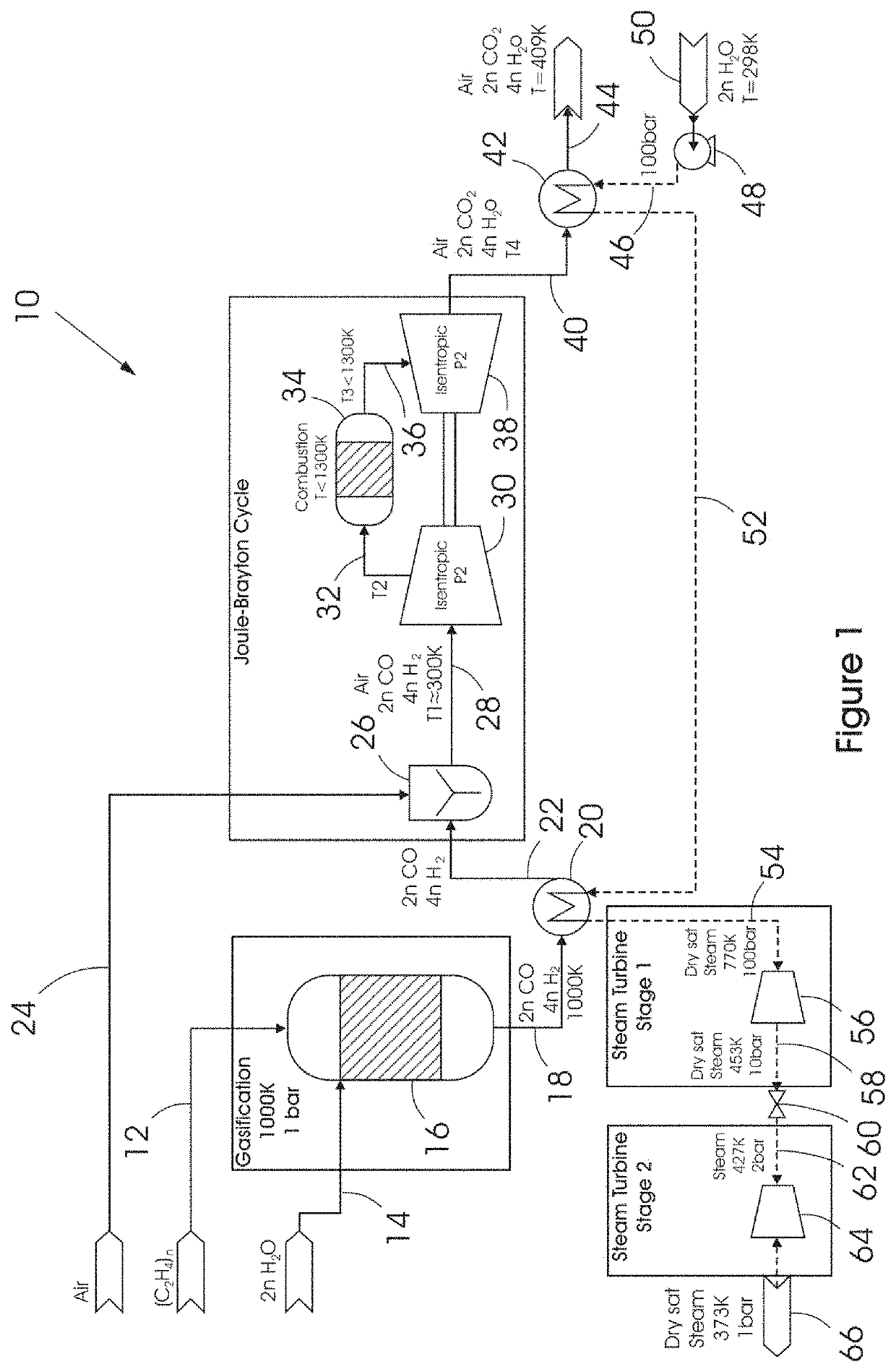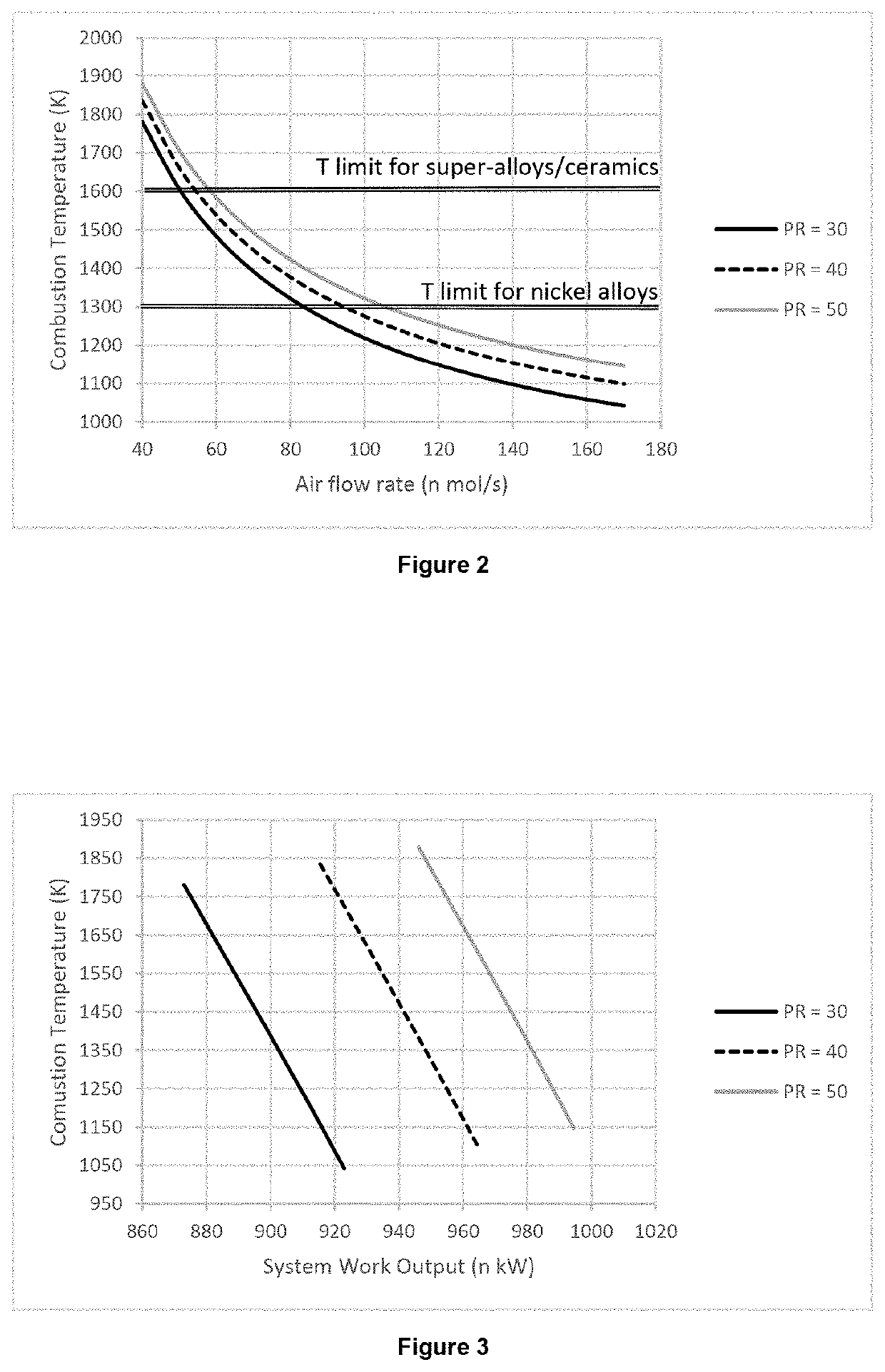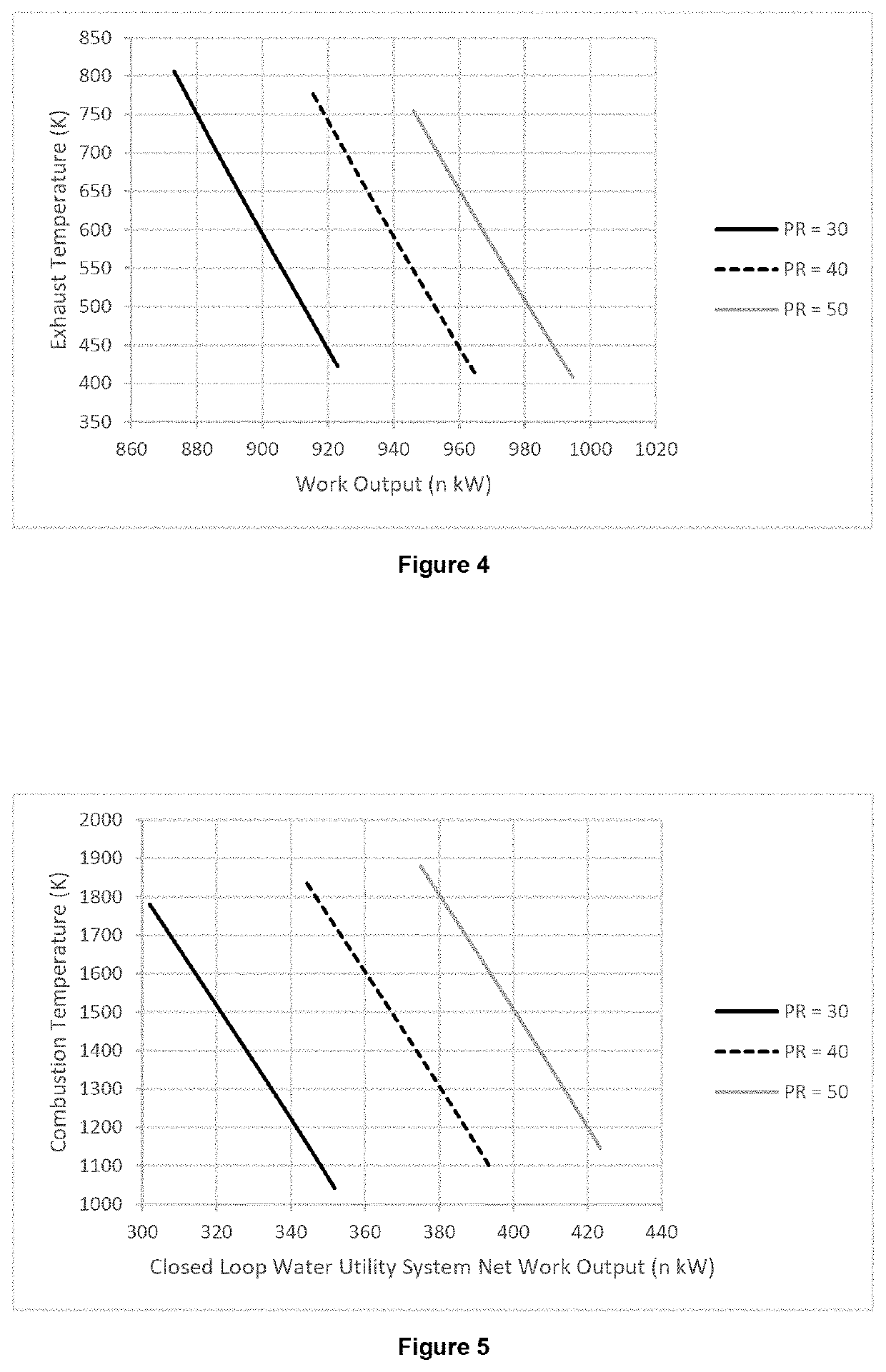Process and system for converting waste plastic into power
- Summary
- Abstract
- Description
- Claims
- Application Information
AI Technical Summary
Benefits of technology
Problems solved by technology
Method used
Image
Examples
case 1
[0091] Closed Loop Water Utility System
[0092]Both the combustion temperature and the work output of the system depends on the airflow. The closer the airflow is to the stoichiometric requirement, the higher the combustion temperature will be and the more efficient the Brayton cycle, according to [Eq.2].
[0093]FIG. 2 shows how the combustion temperature varies with air flow rate and pressure ratio (defined as the pressure leaving the compressor divided by the pressure entering the compressor). An airflow rate of 40n mol / s, where “n” is the number of monomers, is the flow of air that provides the stoichiometric amount of oxygen need for complete combustion of syngas. Low airflow rates result in combustion temperatures that are beyond the operating limits for most materials of construction. Super-alloys or ceramics would need an airflow rate of 50n mol / s to bring the combustion temperature below 1600K. Nickel alloys would need an airflow rate over 80n mol / s for temperatures under 1300K....
case 2
[0109] Integrated Water Utility System
[0110]One significant shortcoming of turbines, especially steam turbines, is that there is no reliable way to recover the energy of vaporization of the fluid passing through the turbine. This is due to cavitation effects when running turbines (or pumps) in the two-phase region. This energy is substantial, far greater than energy contributed from heat capacity. Being able to recover the energy of vaporization would see significant increases in system thermal efficiency.
[0111]Examination of FIG. 1 shows a fresh feed of 2n mol / s liquid water (14) was supplied to the gasification with an energy requirement of 571.1n kW. A portion of this energy requirement was needed to vaporize the water. However, leaving the final steam turbine is the same amount of water, 2n mol / s (66) but this water is not liquid phase, it is dry saturated steam at ambient pressure. If this saturated steam was fed to the gasification, the energy requirements for gasification wou...
PUM
 Login to View More
Login to View More Abstract
Description
Claims
Application Information
 Login to View More
Login to View More - R&D
- Intellectual Property
- Life Sciences
- Materials
- Tech Scout
- Unparalleled Data Quality
- Higher Quality Content
- 60% Fewer Hallucinations
Browse by: Latest US Patents, China's latest patents, Technical Efficacy Thesaurus, Application Domain, Technology Topic, Popular Technical Reports.
© 2025 PatSnap. All rights reserved.Legal|Privacy policy|Modern Slavery Act Transparency Statement|Sitemap|About US| Contact US: help@patsnap.com



